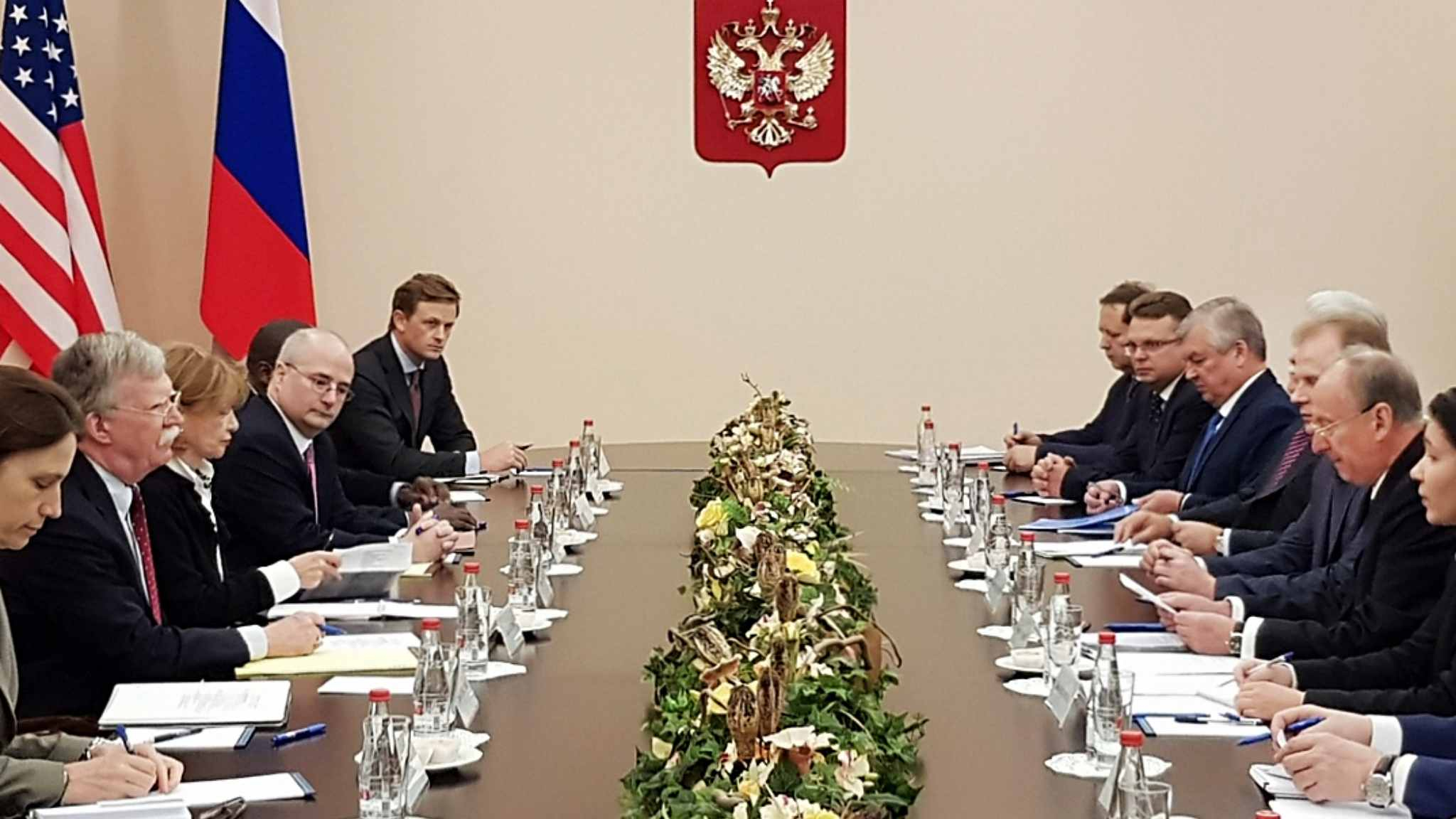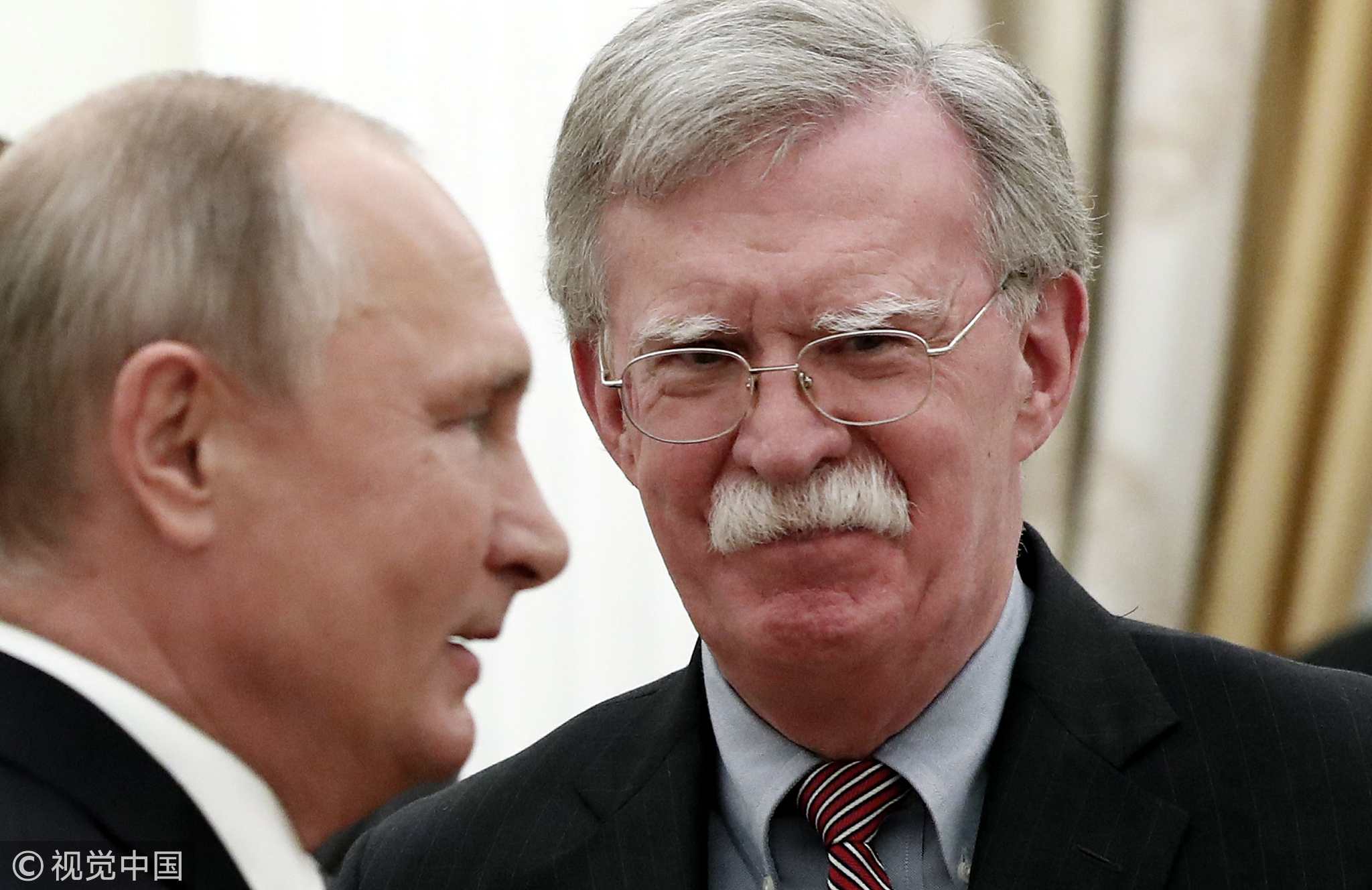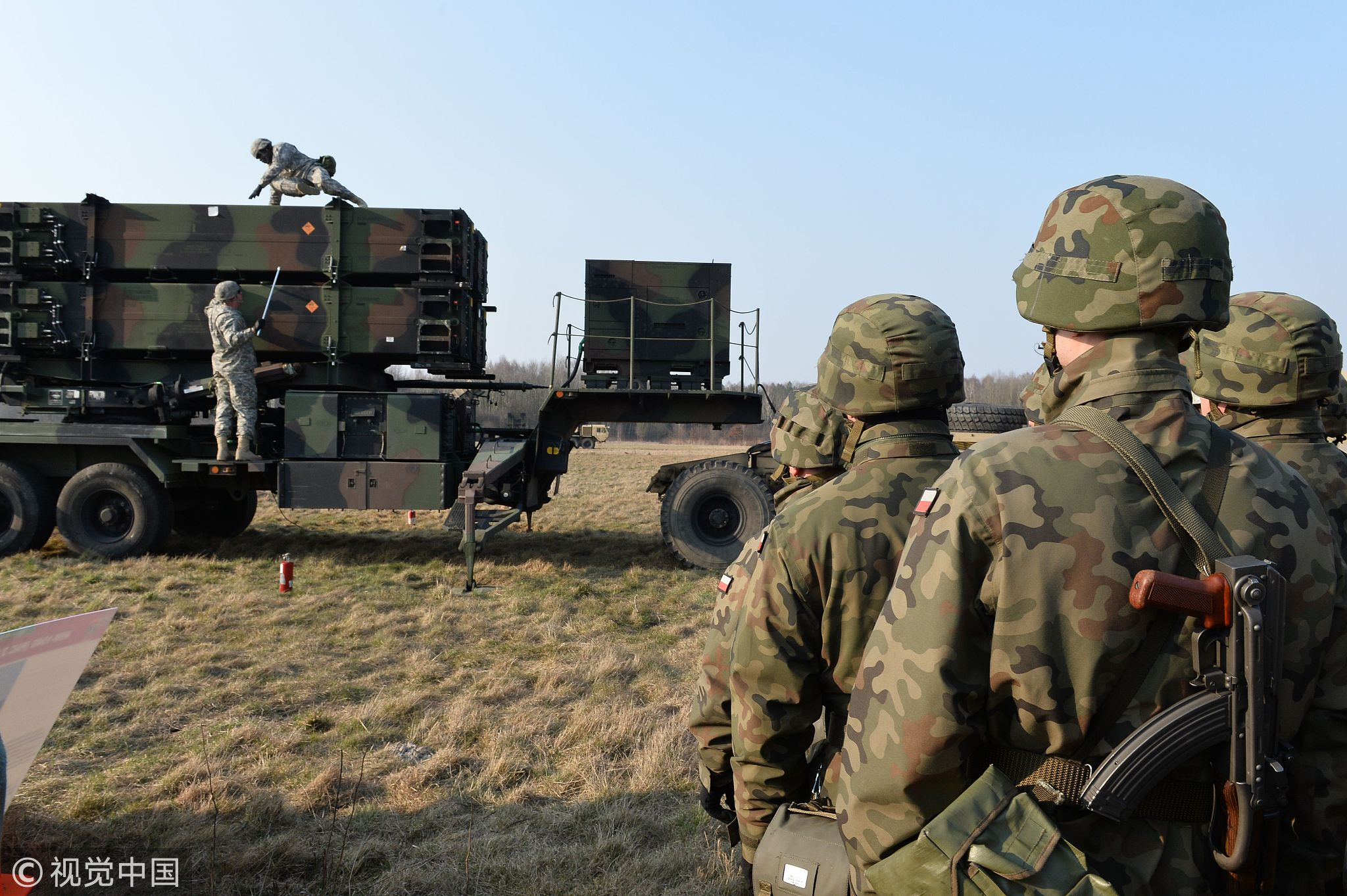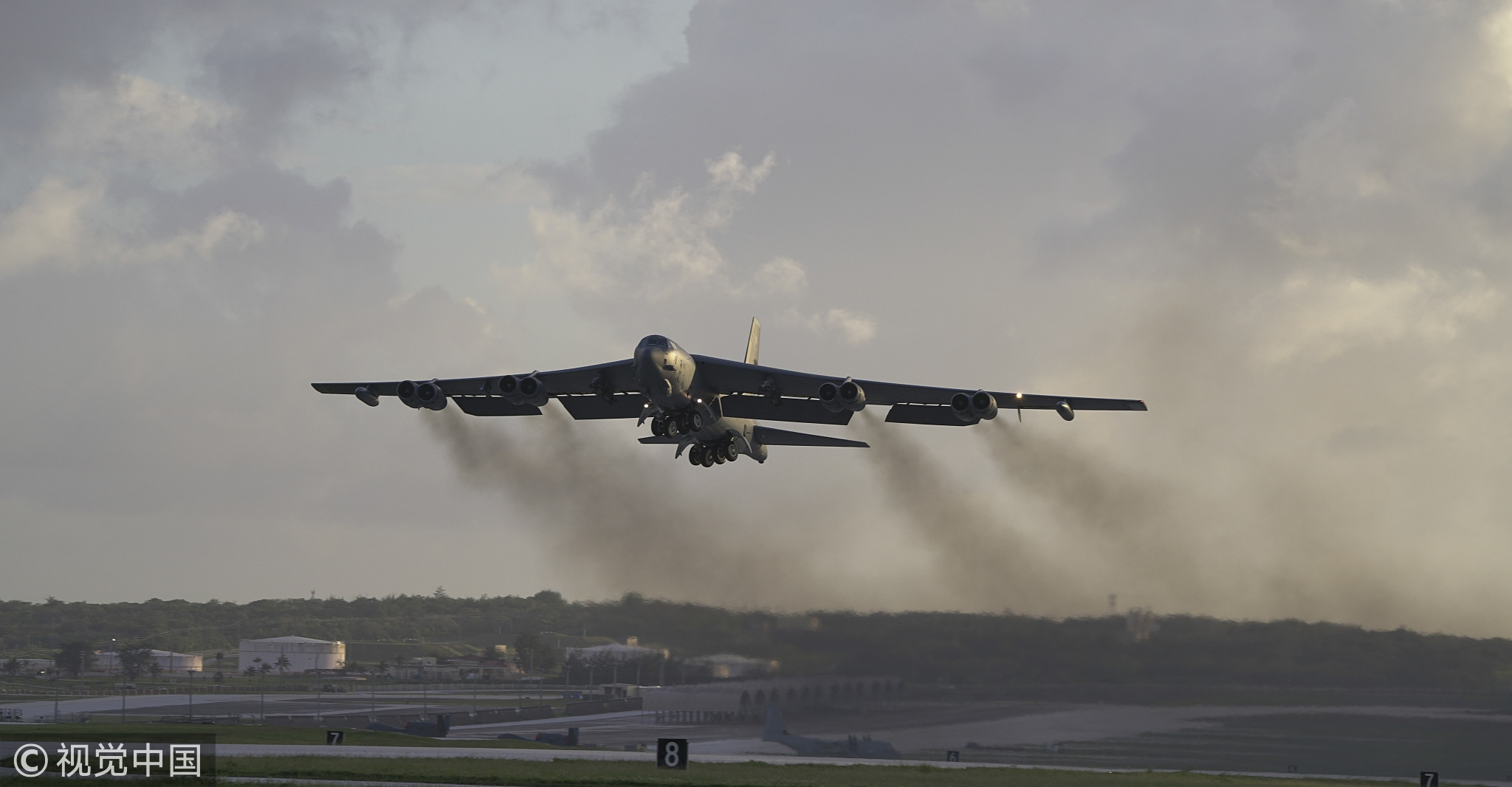
Opinions
22:08, 24-Oct-2018
Opinion: America leaving INF Treaty adds more uncertainties to global security
Updated
21:52, 27-Oct-2018
Cui Zheng

Editor's note: Cui Zheng is an associate professor at the Center for the Economies and Politics of Transitional Countries at Liaoning University in China. The article reflects the author's opinions, and not necessarily the views of CGTN.
White House National Security Advisor John Bolton started his visit to Russia on October 22. The main aim of the visit is to give clarifications to Russia concerning US President Donald Trump's insistence on withdrawing from the Intermediate-Range Nuclear Forces Treaty (also known as the INF Treaty).
After meeting with his Russian counterpart Nikolai Patrushev and Russian Foreign Minister Sergei Lavrov, Bolton met with Putin in the evening of 23rd. The two talked in a friendly manner, in spite of the angry response by Russia triggered by the Trump's announcement earlier. During the meeting, a date has also been set for leaders of the two countries to meet in Paris next month.

Russian President Vladimir Putin meets with John Bolton, the national security adviser to the US President, at the Kremlin in Moscow on October 23, 2018. /VCG Photo
Russian President Vladimir Putin meets with John Bolton, the national security adviser to the US President, at the Kremlin in Moscow on October 23, 2018. /VCG Photo
Trump's actions have sparked worries for a disturbance in the strategic stability and the possibility of an arms race. All of this will inevitably add more uncertainty to major party relations, including that between US and Russia.
The INF: A dead letter?
The INF Treaty was signed by the US and the Soviet Union in 1987. It aims to maintain strategic stability between the two world powers during the cold war.
US and Russia have argued over the INF Treaty for many years in the 21st Century after the cold war. Washington has accused Moscow of carrying out various intermediate-range missile tests in the past decade while Moscow, on the other hand, argued that the US-designed unmanned combat aerial vehicle is the same as a land-based cruise missile.
Apart from that, the missile defense systems deployed in countries like Romania and Poland are capable of launching cruise missiles. This poses a security threat for Russia.

Polish soldiers watch as US troops from the 5th Battalion of the 7th Air Defense Regiment emplace a launching station of the Patriot air and missile defense system at a test range in Sochaczew, Poland on March 21, 2015. /VCG Photo
Polish soldiers watch as US troops from the 5th Battalion of the 7th Air Defense Regiment emplace a launching station of the Patriot air and missile defense system at a test range in Sochaczew, Poland on March 21, 2015. /VCG Photo
Russia and the US have been accusing each other of violating the treaty for years, and it seems that both sides to some extent might break the INF treaty for the sake of their own national interests. Before Trump's declaration of exit, Russia already stated in 2013 that it would compile a feasibility report concerning the exit of INF. As a result, the INF has been nothing but an empty treaty now.
Trump's agenda
The exit announcement on October 20th is not an act on a whim, but rather a calculated move. The announcement came before the US mid-term election, which is held on November 6. It would show the hardliners and conservatives that Trump himself isn't colluding with Russia. It can also show to the voters Trump's firm resolve to safeguard US national interests. It will surely help Trump in this upcoming election.
In addition, the move will boost purchase for missile weapons by the United States. US arms dealer like Lockheed Martin and Raytheon Company will pay pack politically, which is what Trump needs the most.
Finally, while the US is actively involved in the Asia-Pacific region, its superiority of conventional forces are gradually eroded. The exit could help fuel its anti-ship capabilities in the area of long-range targeted effect.
The aftermath
According to set procedures, a total of six months is required for full withdraw of the INF Treaty. Washington has not, until now, taken any measures to withdraw from the treaty.
However, if Trump makes his declaration of exit into a reality, Washington will be able to deploy intermediate and land-based cruise missile in Europe and Middle-East. This will directly threaten Moscow and Ural in Russia.
Also, nations hostile to the US in the Middle-East, like Iran, will be in the missile's range. Japan, Korea and Guam are also potential places for deployment, threatening the Far East of Russia and China's eastern and middle areas.

US Air Force B-52H Stratofortress bomber takes off from Andersen Air Force Base, Guam on May 4, 2018. /VCG Photo
US Air Force B-52H Stratofortress bomber takes off from Andersen Air Force Base, Guam on May 4, 2018. /VCG Photo
Trump may also refuse to renew the Strategic Arms Reduction Treaty after the third phase expires in 2021. Coupled with America's unilateral withdraw from Anti-Ballistic Missile Treaty in 2002, the nuclear-reduction framework will, in effect, collapse.
Russia held the biggest ever military exercise in 2018 while NATO also held military exercises multiple times around Russia. Four military bases around Kaliningrad has been upgraded. The US also deployed anti-missile systems in Romania and Poland. These moves reflect a contest between the world's largest and second-largest nuclear power. These will undoubtedly cast a profound influence on issues like major power relations, global military landscape and geological politics.
Germany and Sweden have voiced clear opposition to the US withdraw from the INF Treaty. Saudi Arabia also attaches great important to Putin's visit. The US and Russia are both developing and equipping ultra-high speed weapons. In all, this means that the aftermath of US withdrawal will stay for a long time.
(If you want to contribute and have specific expertise, please contact us at opinions@cgtn.com)

SITEMAP
Copyright © 2018 CGTN. Beijing ICP prepared NO.16065310-3
Copyright © 2018 CGTN. Beijing ICP prepared NO.16065310-3